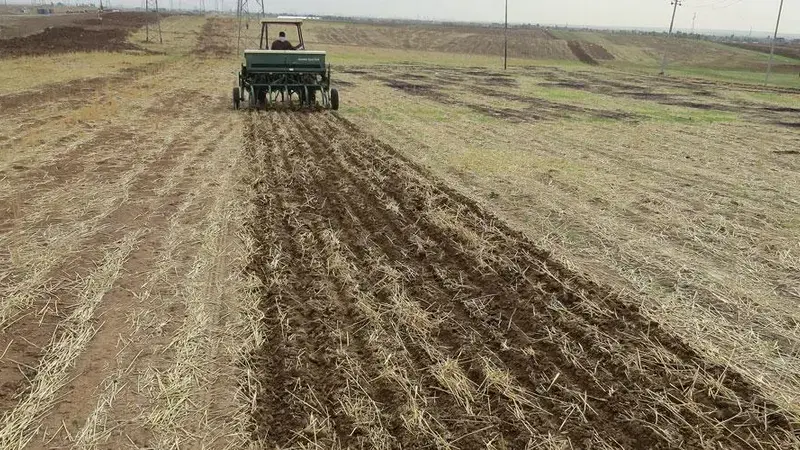Conservation agriculture

Conservation agriculture – the practice of not plowing farmlands and leaving crop residue in the field for improved soil fertility and water conservation – balances yields, resource conservation, and increased efficiency for smallholder farmers. By not plowing farmers also benefit economically – saving on the costs of fuel, labor, and seed.
Used by a majority of farmers in Australia, Brazil, and by many in North America and other middle and high income countries, the practice has the potential to benefit food security in many dryland agro-ecosystems in Central and West Asia, the Middle East, and in North and sub-Saharan Africa.
Through its ability to improve water use efficiency, absorb moisture, enhance soil health and reduce evaporation, conservation agriculture offers a sustainable solution to many of the challenges that dryland farmers face. Conservation agriculture also reduces greenhouse gas emissions, improves air quality by removing the need to burn stubble, and enhances water quality through the reduced application of fertilizers, pesticides, and herbicides.
ICARDA’s efforts to promote the practice involve the removal of two major obstacles that limit its wider adoption: the absence of affordable seeders and a favorable policy environment. Locally-made low-cost seeders require a local market for repair and technical services to farmers. These markets are taking shape today, and are expected to mature in the medium term.
Creating a favorable policy environment requires a change in perception among decision makers in low-income countries: ministry officials, extension services, and farmers in dryland countries need to be engaged and informed of the benefits.
SELECTED IMPACTS:
- An Australian–ICARDA project worked with local workshops in Iraq, Syria, and Jordan to adapt seed drills for use in conservation agriculture. Costing US$ 2000-6000, the seeders were only a fraction of the cost of imported models.
- In Jordan, where wheat production is often constrained by prolonged drought, farmers in Irbid experienced average wheat yields that were 16 percent higher than those achieved under conventional practices, generating net returns of US$ 296 per hectare.
- In Morocco, policymakers are including conservation agriculture in a national effort to reverse falling agricultural productivity and stabilize yields after trials demonstrated a 19 percent increase in wheat yields.
- As Iraqi farmers became convinced of the benefits of conservation agriculture, the practice’s application grew rapidly – from 0 ha in 2007 to over 15,000 ha today.
